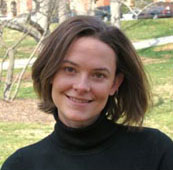
MUSEUM STUDIES
Milling Around by by Rachel Miller

Over fall break four interior architecture students and two history students studying in the historic preservation program traveled to Louisburg, North Carolina, to assist Preservation North Carolina with one of their properties. Most of the students on the field trip had worked with Preservation North Carolina regional manager Dean Ruedrich during the summer field school (HIS/IAR 555), and we were excited to get more hands-on preservation experience.
While in Louisburg, our main task was to document and disassemble the first floor of the Cascine Grist Mill for future restoration work. The Mill was built in the 1850's, and is one of the best and largest examples of grist mills in North Carolina. Originally part of a large plantation complex, the Mill still contains most of its machinery Neglect and water damage over the years, however, have taken their toll. When we arrived on site Monday morning, we toured the Mill and saw that the sill beam has deteriorated, causing part of the building to slip off the foundation and the first floor to collapse. Weeds and briars surrounding the outside of the building, and inside we found remnants of campfires and piles of trash. At first, everyone was a bit overwhelmed with the project, but after taking a deep breathe and putting on our pairs of work gloves, we began to organize the rest of the days activities.
Our first task was document the existing conditions and label all the flooring and debris in a systematic way so that it could eventually be but back in place after the building was stabilized. While one team photographed the overall space and specific details, another group was busy labeling floor boards and framing with lumber crayons, and a third group was preparing a place for us to stack and store the lumber until it could be moved back in.
After all the documentation was complete, we began to move the flooring and framing out of the mill. The process was slow and systematic to make sure all the pieces were handled with care. Only a few rather dramatic discoveries caused the work to pause: large spiders, poison ivy, and lumber so heavy that it required all of eight of us to lift it out. After a long and exhausting day of work, Dean treated us to a wonderful dinner at his house where we met other local preservation professionals, discussed possible uses for the mill, and chatted about career opportunities around the state. It was a nice chance to get to know some the preservation professionals in a relaxed environment, and to hear their stories of how they ended up in the preservation world.
The next morning we returned to the mill building to continue removing material and cleaning for future stabilization work. When we finished, we had a pile of lumber of five feet high, and the building was ready for the restoration professionals to take over.
In the end, everyone was tired and dirty—and a few of us still have scars from the poison ivy—but the project was incredibly rewarding. We all fell in love with the mill building, and formed great friendships with the PNC staff. In addition to learning more about how to "read a building," we saw how real hands-on work can make a practical difference in local preservation.